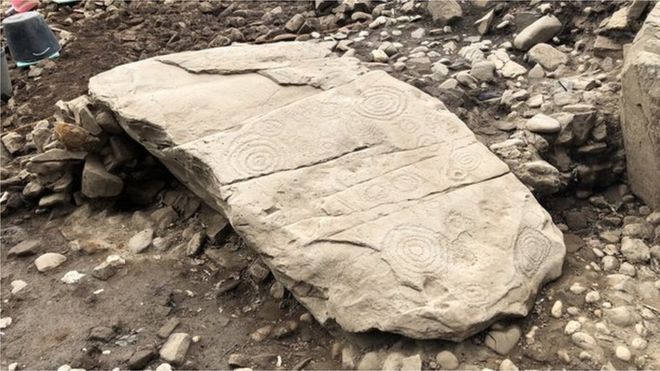An enclosure measuring 16 metres across is believed to date from the Iron Age
[Credit: City of York Council]
Pits and what looks to be a hearth have been found alongside, during roadworks at the roundabout of the junction with the road to Wetherby, on York’s outer ring road
A nearby ditch has produced a series of related finds, including decorated pottery fragments, a piece of quern-stone and industrial waste material in the form of molten slag.
Read the rest of this article...












